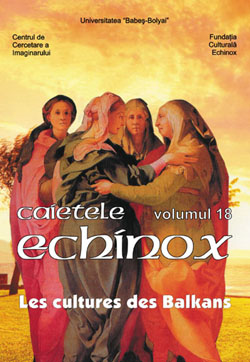Manichéisme et néo-manichéisme : Le Bogomilisme au carrefour des espaces sacrés orientaux
Manichaeism and Neo-Manichaeism:Bogomilism Between the Sacred Spaces of the Orient
Author(s): Silviu LupaşcuSubject(s): Cultural history
Published by: Universitatea Babeş-Bolyai
Keywords: Mani; Manichaeism; Neo-Manichaeism; Gnosticism; Zoroastrianism; Zurvanism; Bogomilism; Catharism; Buddhism; Taoism; Dualism of Light and Darkness.
Summary/Abstract: In the context of the Oriental syncretistic equidistances, the archaic Manichaean communities (Mughtasilah, Sābat al-Batā’ih) and the Neo-Manichean communities (Massalians, Paulicians, Bogomils, Cathars, Manichean Taoists and Manichaean Buddhists) admit as a common denominator the dualism of Light and Darkness: the Zoroastrian-Zurvanit cosmogonic background circumscribed the Manichaean rewriting of the gnostic theology, the shaping of the Manichaean eschatology after the Jewish-Christian apocalyptic theology and the institution of the Manichaean human ideal after the precepts of the ascetic ethics of Buddhism and Taoism. The social context, the cultural circumstances and the dynamics of the historical evolution of Eastern and Western religious spaces determines the spiritual self-definition of the Manichaean and Neo-Manichaean communities from the perspective of absolute dualism or from that of mitigated dualism.
Journal: Caietele Echinox
- Issue Year: 2010
- Issue No: 18
- Page Range: 306-333
- Page Count: 28
- Language: French
- Content File-PDF

